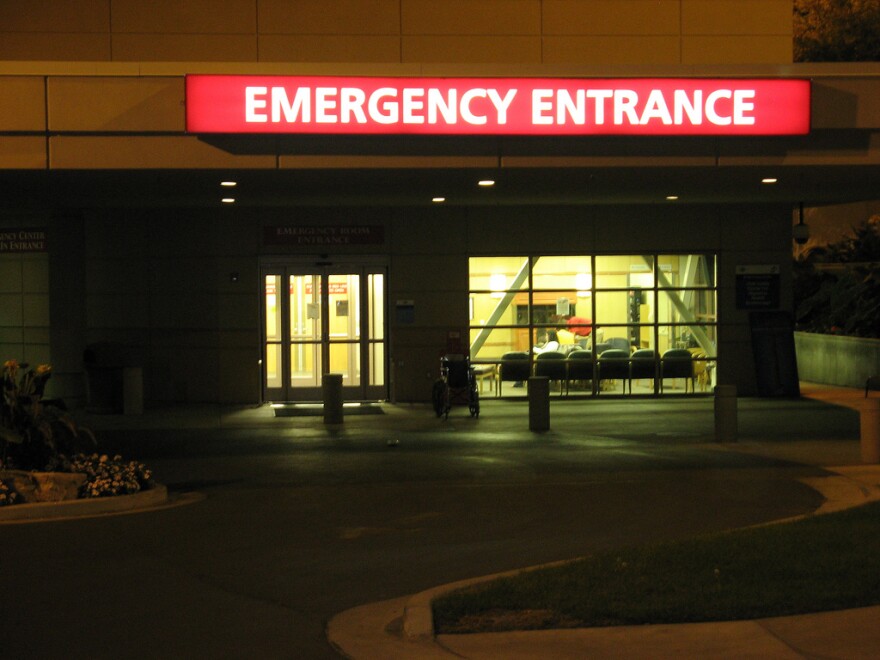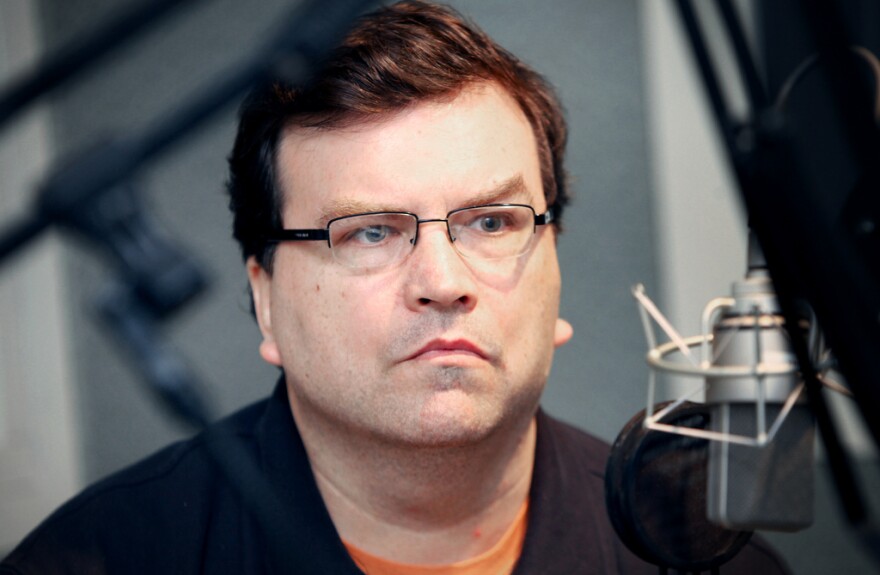"For me, it was just a growing depression, and shame, and self-rage, and loathing."
David Fitzpatrick
The State Department of Public Health has just released 2013 data on Health Risk Behaviors in Connecticut’s High School Age Youth. This week, WNPR is focusing on one particularly troubling condition described in the report: self injury.
On Wednesday, we learned about how one Connecticut school district is trying to cope with a substantial rise in the number of high school students who are cutting themselves.
In part two, we bring you the story of a Connecticut man’s journey through mental illness and self-injury to recovery.
Some may find this story disturbing.
David Fitzpatrick grew up in Guilford and graduated from Skidmore College. During his late teens and early 20s, he began a slow descent into severe mental illness. At the worst times, he would cut himself with razor blades.
“For me, it was just a growing depression, and shame, and self-rage, and loathing,” Fitzpatrick said. “I got so overwhelmed. I felt like I can’t tell anyone about this, because it’s so bizarre.”
Self-injury is defined as intentionally inflicting harm to one’s body. When doctors worked with him to try and stop hurting himself, Fitzpatrick told them he didn’t want to give it up.

“You want to hold onto it, because it’s a great way to cope. Obviously, it’s not a great way to cope, but that’s what I felt. I felt like this releases tension better than anything.
Not everyone who does this suffers from the kind of mental illness Fitzpatrick was battling. According to the Cornell Research Program on Self-Injury and Recovery, one of every four people who self-injure does it only once in his or her life. Six to eight percent report chronic self-injury.
But for Fitzpatrick, and for most people who do cut, the intention was not suicide. “It was about releasing the tension,” he said. “It was helpful -- in that sense it was helpful -- even though it doesn’t make sense.”
Fitzpatrick described an adrenaline rush, a kind of euphoric, stoned feeling he’d get from self-harm, and he said he became hooked on it. “Self-injurious behavior is not about life and death for most people,” he said.
Amy Fitzpatrick is David’s wife. “It’s a coping mechanism,” she said. “It’s a way to deal with stress. It is one of the least healthy ways to deal with stress.”
For more than 15 years, David Fitzpatrick journeyed through emergency rooms, in-patient hospitalizations, shock treatments, medication, and therapy.
“And then, suddenly, I had a doctor who kind of pierced the rage and inertia and all that,” he said. “And almost like stoking a fire, got the embers going, and saw that somewhere inside of myself, there was a worthwhile something that could be activated. And he kind of brought the fire out.”

A state survey found that about two in ten female high school students purposely hurt themselves without wanting to die at least once in the past year.
He also began to write, with unsparing honesty, about his harrowing life story. The memoir called Sharp has been described as a disturbing, dark, and affecting book. Ultimately, it’s a story of healing and recovery. Now David and his wife Amy speak openly with groups about their lives.
“On our first date, I asked him about his scars, and he told me the truth, and that was the start of our atypical fairy tale,” Amy Fitzpatrick said. She talks about her role as caregiver, and tackles the subject of stigma.
“Bringing it out into the open -- making it part of the conversation, actually -- can relieve some of that pressure; can relieve that hidden desire, and the realization that I’m not the only person who has this kind of stress and wants to take it out on myself,” Amy Fitzpatrick said.
The 2013 Connecticut School Health Survey found that about two out of every ten female high school students in the state had purposely hurt themselves without wanting to die at least once in the past year. The same was true for one in ten male students. Risk for self-injury among teens was greatest in ninth, tenth and eleventh grades.
Amy Fitzpatrick said that if you suspect someone you know may be self-injuring, it’s important to get help immediately. But, she said, try not to be angry or judgmental.
“Try not to be forceful,” she said. “And, of course, everyone is different. Every situation is unique, but one of the best things to do is to stand still and say: when you’re ready to talk, I’m right here.”
Amy Fitzpatrick said it’s important to share stories of recovery, from cutting, self-injury, and mental illness. Though it may be a life-long journey, David and Amy Fitzpatrick said they want people to know that healing happens.
Support for people struggling with cutting and mental illness is available at S.A.F.E. Alternatives as well as the National Alliance on Mental Illness.
Correction: A quote about "stigma" was incorrectly attributed to David Fitzpatrick. It was stated by Amy Fitzpatrick.


